How Climate Data Improves Planting Decisions
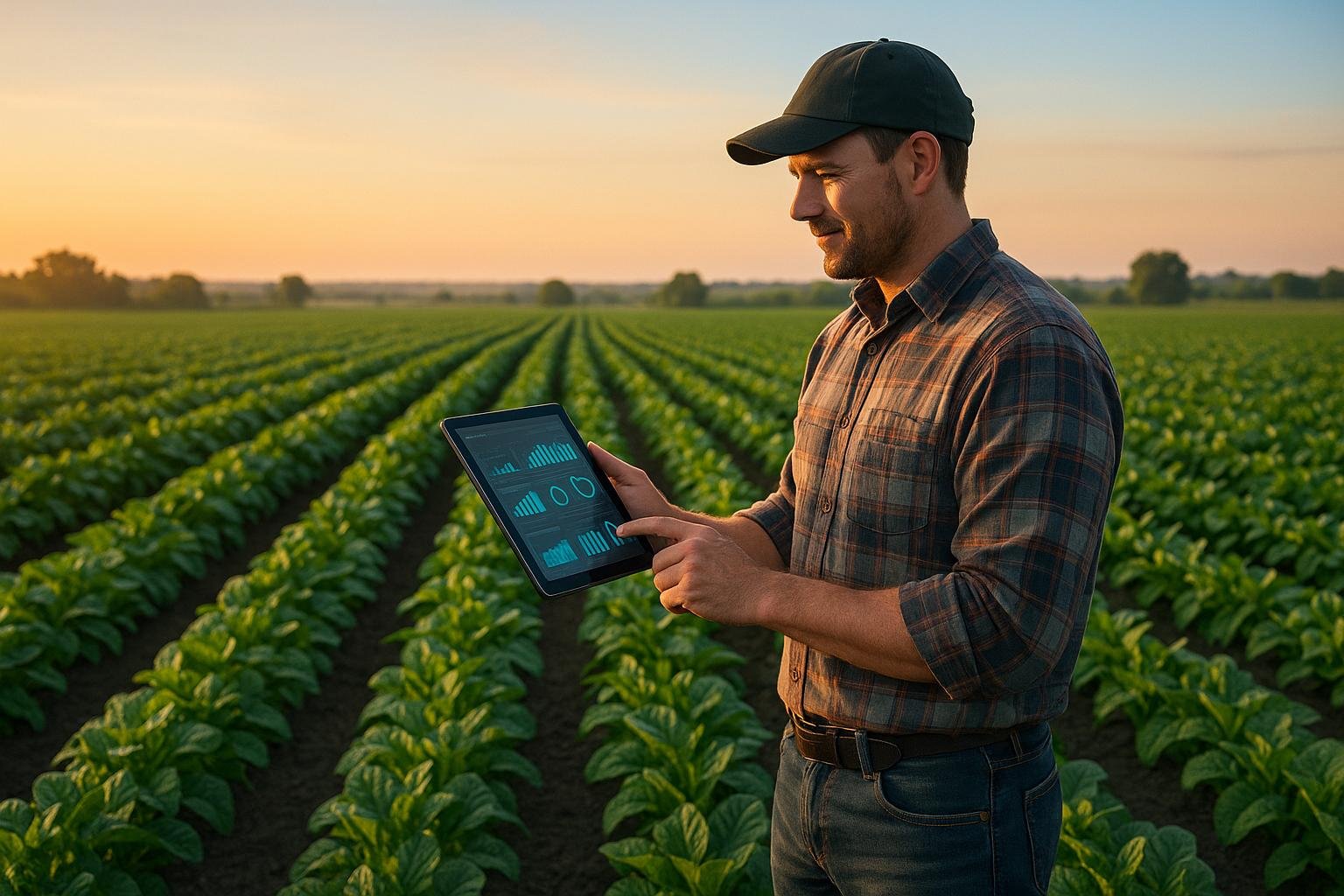
Planting decisions are no longer just about tradition - they're about data. With climate patterns shifting, relying on old planting methods often leads to poor results. Here's why using climate data matters:
- Rising Temperatures: The 10 hottest summers occurred between 2014 and 2023.
- Longer Growing Seasons: The U.S. growing season has extended by over two weeks since the early 1900s.
- Regional Changes: The Southwest is drier, while the Eastern U.S. is wetter.
Precision Agriculture: How to Use Weather Forecast Data to Inform Your Crop Management

Research Findings: How Climate Data Improves Planting Strategies
Recent studies highlight a significant shift in planting strategies, moving away from traditional calendars to evidence-based decisions grounded in climate data. This shift has proven to be more than just theoretical - precise climate data is helping gardeners and landscapers improve plant survival rates and boost productivity. By tailoring planting schedules to specific climate metrics, the guesswork is largely removed from the equation.
Climate Data for Plant Selection and Timing
Tracking temperature and precipitation patterns has become a game-changer for plant selection and planting schedules. These factors allow gardeners to fine-tune decisions about what to plant and when to plant it.
"Weather data helps farmers make better decisions on planting, irrigation, pest control, and harvesting, improving efficiency and sustainability in agriculture." - Viktor Roman [1]
One critical aspect is temperature patterns, which have grown increasingly important as growing seasons shift. For instance, New York State has seen its growing season extend by an average of 11.5 days between 1895 and 2020 [5]. While this creates new opportunities for planting, it also requires careful adjustments to avoid heat stress during critical growth stages. Frost dates, another key metric, help determine which crops are best suited for specific regions [3].
Rainfall monitoring is equally impactful. Farmers who adapt their planting schedules based on rainfall patterns report better germination rates and improved early plant establishment [1]. In California's wine country, vineyard managers now rely on predictive analytics to determine the best planting times, as traditional seasonal cues have become less reliable [2].
Another critical factor is the concept of "chilling hours", which refers to the time fruit trees need between 32°F and 50°F to flower properly. In California's Central Valley, chilling hours have already decreased, with projections suggesting up to an 80% reduction by 2100 [3]. This data helps orchardists make informed decisions about which fruit tree varieties to plant and how to adjust their management practices.
Reducing Risks with Climate Data
Climate data does more than improve planting strategies - it helps reduce risks, saving gardeners and farmers from costly failures caused by extreme weather, pests, and diseases. These risks are not minor: crop losses average 40% globally, amounting to $220 billion annually [6].
Early warning systems based on climate data have proven to be highly effective. Farmers using agrometeorological advisories have seen up to a 50% increase in earnings [1], thanks to better preparation for weather-related issues and optimized planting strategies.
Extreme temperatures are a growing challenge, but climate data helps gardeners and farmers plan for heat-tolerant plants, reducing the impact of temperature stress. Pest and disease management also benefits significantly from climate data. Warming temperatures are expanding pest ranges, while higher humidity levels increase fungal disease risks [4]. Since 1961, climate change has contributed to a 21% decline in global agricultural productivity, with much of the loss linked to pests and pathogens [7].
The USDA's Natural Resources Conservation Service highlighted the value of climate-based strategies in 2023. Through technical assistance programs, they helped U.S. farmers implement sustainable practices like soil health management, water conservation, and integrated pest management. These efforts led to a 15–20% reduction in crop losses from pests and diseases [6].
Water management is another area where climate data plays a vital role. Changing rainfall patterns mean gardeners must choose drought-resistant varieties in dry regions and flood-tolerant plants in wetter areas [4]. Access to real-time and historical weather data allows for better irrigation planning, preventing both water stress and overwatering [1].
Soil health also ties into climate data. Shifts in climate can alter soil pH and nutrient availability, making annual soil testing combined with climate analysis essential. This proactive approach helps gardeners select appropriate plants and make necessary soil amendments, avoiding costly planting failures [4].
How AI Uses Climate Data for Smart Planting
Artificial intelligence is changing the game for gardeners and farmers by turning climate data into actionable planting strategies. By analyzing a mix of historical data, real-time weather updates, and climate factors like soil moisture and atmospheric pressure, AI provides tailored recommendations on what crops to plant and when to plant them.
AI-Powered Planting Schedules
AI systems are now capable of creating customized planting schedules by combining decades of historical climate data with real-time weather patterns and the specific needs of different crops. This method has shown measurable success, with precise planting timing reducing crop losses and boosting income by anywhere from 3.7% to 20.4% [10].
Take Microsoft’s agricultural app in India, for example. It uses 30 years of climate data to send farmers text alerts about the best times to sow their seeds. The result? A 30% increase in crop yields [10]. These tools don’t just stop at timing. They also provide highly accurate yield predictions by analyzing historical performance, current field conditions, and weather forecasts. In fact, AI models can achieve yield prediction accuracy rates of over 90% [8]. This level of detail allows gardeners and farmers to plan their planting schedules down to the day, ensuring optimal conditions for germination and early growth.
In Brazil, AI-driven models like random forests and support vector machines are being used to predict soybean yields across key farming areas. These models can estimate yields up to 90 days before harvest, with error rates ranging from 9.2% to 41.5%. This helps farmers allocate resources more effectively and manage their crops better [9]. AI also identifies the best crops for future climate conditions and adjusts planting schedules to dodge extreme weather events [9]. These techniques, already proven in places like Brazil and India, are becoming increasingly relevant for farming and gardening in the U.S.
But AI’s influence doesn’t stop at scheduling. Its ability to predict and respond to weather conditions in real time is making planting even smarter.
AI for Weather Prediction and Response
One of AI’s standout uses in agriculture is real-time weather forecasting. By processing data from satellites, weather stations, and ground sensors, AI generates hyperlocal forecasts that help growers prepare for and adapt to extreme weather.
This technology is making a noticeable impact. AI-driven insights have improved yield predictability by up to 25% while reducing wasteful resource use. Temperature forecasts have become 5.66% to 20.39% more accurate, and relative humidity predictions have improved by 8.05% to 12.76% [12][14].
In the U.S., these advancements are being put to practical use. California farmers, for instance, are using the tecnico.farm platform to analyze weather data and soil moisture, enabling precise irrigation planning. Meanwhile, corn farmers in Iowa who rely on IBM’s Maximo Application Suite for Agriculture have reported yield increases of up to 10% thanks to AI-driven recommendations [15].
AI’s predictive power also extends to extreme weather events. Machine learning algorithms can forecast events like floods or droughts days or even weeks in advance. Google’s AI-powered Flood Early Warning System, for example, provides timely alerts to communities at risk, while IBM’s Green Horizons initiative uses satellite and sensor data to predict future air quality conditions [11].
These tools also help farmers adapt quickly to sudden weather changes. For instance, pea farmers in Uttar Pradesh, India, use AI-enabled precision irrigation systems that monitor weather, soil, and crop conditions. By adjusting water distribution based on real-time data, they’ve saved water and boosted productivity [9]. This ability to respond rapidly during critical growing periods can make the difference between a thriving crop and a failed harvest [13].
sbb-itb-4d6a8dd
🚀 Ready to Reinvent Your Garden?
Join thousands of homeowners who have transformed their gardens using our AI design tool. Upload one photo to explore endless possibilities.
Get your AI garden designs →Using AIGardenPlanner for Custom Planting Decisions
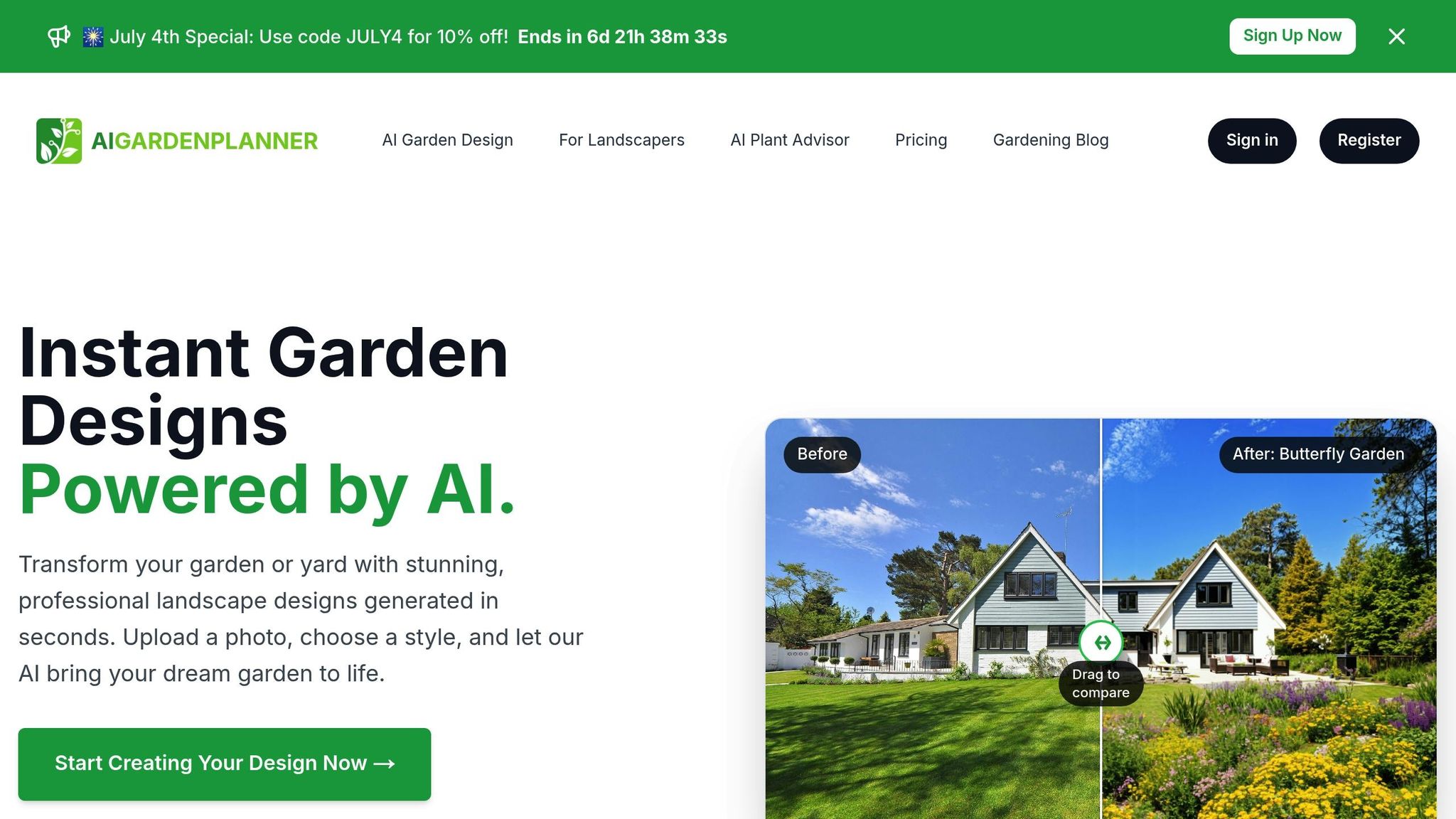
AIGardenPlanner brings the power of AI, proven in large-scale agriculture, directly to U.S. gardeners. By blending climate data with personalized garden designs, it helps create smarter planting strategies tailored to individual needs. This tool adapts the advanced techniques used in commercial farming for home and small-scale gardening.
Using machine learning, AIGardenPlanner evaluates soil quality, climate conditions, plant compatibility, and even aesthetics to craft custom garden designs. It’s not static either - it evolves with seasonal shifts, new plant varieties, and user feedback [16].
Features for U.S. Gardeners
AIGardenPlanner is designed to tackle the unique challenges posed by America’s diverse climate zones. From the humid Southeast to the dry Southwest, this AI-powered tool ensures that its recommendations align with local growing conditions [17].
The AI Plant Advisor stands out by analyzing local garden conditions and offering tailored advice in minutes. Unlike generic gardening tips, it factors in your region’s climate, soil type, and personal preferences to maximize your garden’s potential. Whether you’re looking for low-maintenance plants, drought-resistant options, or pollinator-friendly combinations, the tool provides suggestions customized to your goals [16].
Beyond plant selection, AIGardenPlanner offers detailed guidance on planting, care, and pest management. By addressing regional pest cycles and disease risks, it helps gardeners proactively tackle common issues. For an even more personalized touch, users can upload photos of their garden, and the platform will transform them into landscape designs. With access to over 50 garden styles - and the ability to create custom designs - you can align your vision with AI-backed climate optimization.
Benefits for Home and Professional Users
The platform’s tailored features make gardening more efficient and enjoyable for everyone, from hobbyists to professional landscapers. For home gardeners, it removes the guesswork, reducing the chances of failed plantings. Professionals, on the other hand, can streamline their design process, offering clients reliable, data-driven results.
Landscapers will also appreciate the commercial licensing options. The Pro and Premium plans support up to 50 and 1,000 projects respectively, making it ideal for managing multiple client gardens across varied climate zones.
One of the tool’s standout benefits is its ability to integrate climate data and seasonal trends into garden planning [18]. As climate patterns shift across the U.S., having AI that adapts its recommendations in real time becomes a game-changer. This ensures that both home gardeners and professionals can stay ahead of changing conditions.
For those curious about trying it out, AIGardenPlanner is free to use, with a $15 Pay As You Go option for exploring its features.
Conclusion: The Future of Data-Driven Gardening
Data-driven gardening is transforming how we approach planting by replacing guesswork with informed decisions. By combining climate data with AI technology, it’s reshaping both home gardening and professional landscaping, making them more precise and efficient. For instance, AI algorithms now analyze weather patterns, soil health, and crop performance to provide insights that were once out of reach [19]. These insights help gardeners pinpoint the best planting times, predict potential diseases, and implement smarter pest control strategies - completely changing how gardens are managed.
This shift isn’t just about convenience; it’s also about using resources more wisely. Data-driven irrigation systems, for example, can cut water usage by over 20% [22]. For gardeners in the U.S. who are grappling with rising water costs and environmental concerns, this means saving money while also reducing their environmental impact.
On top of that, data-driven gardening helps build resilience. As unpredictable weather patterns become the norm across the U.S., the ability to adapt to shifting growing conditions is more important than ever. These strategies empower gardeners to handle challenges like sudden temperature changes or droughts, paving the way for gardening practices that stand the test of time [21]. Looking ahead, the future promises even more advanced tools: AI-powered irrigation systems, automated maintenance reminders, and robotic planting technologies are already emerging [20]. The integration of IoT devices with AI is set to make garden management even more dynamic, allowing real-time adjustments based on changing conditions.
One standout example of this innovation is AIGardenPlanner, which bridges the gap between complex climate science and everyday gardening. Tools like this make it easier for gardeners - whether beginners or seasoned pros - to make confident planting decisions, reduce waste, and achieve thriving gardens.
The future of gardening lies in blending the wisdom of traditional practices with the capabilities of modern AI technology, creating a balance that ensures sustainable and successful gardening for years to come.
FAQs
How can climate data help me decide what and when to plant?
Climate data is a game-changer when it comes to making better planting decisions. By analyzing local weather patterns, seasonal shifts, and soil conditions, it becomes much easier to pinpoint the ideal planting times. For example, warmer springs might mean planting earlier, while longer growing seasons could open up opportunities for different crops.
It also helps in selecting the right crops for your specific climate. This ensures you're growing varieties that will thrive in your region, improving yields and helping you adapt to changing weather conditions. Over time, this approach keeps your garden or farm productive and better prepared for whatever nature throws your way.
How does AI use climate data to improve planting decisions?
AI takes climate data and turns it into actionable advice for gardeners and landscapers. By analyzing factors like weather patterns, soil conditions, and seasonal trends, it provides tailored recommendations for when to plant, which crops to choose, and how to care for them based on your specific location.
These tools don’t just simplify the process - they can boost garden productivity, strengthen plant health, and cut down on the trial-and-error approach. With these insights, you can grow healthier plants, save time, and make the most of your resources.
How can gardeners and farmers use climate data to make smarter planting decisions and minimize risks from extreme weather and pests?
Gardeners and farmers now have access to AI-powered tools that use climate data to guide smarter planting decisions. These tools analyze local weather patterns, soil conditions, and historical climate trends to suggest the ideal planting times, recommend plants suited to the climate, and offer customized pest management strategies to tackle shifting conditions.
With real-time weather updates and predictive models, growers can stay ahead of unpredictable climate changes, minimizing risks from extreme weather and pest infestations. This not only boosts the productivity of gardens and farms but also promotes sustainable growing practices that are better equipped to handle environmental challenges.
Related posts
Related Articles
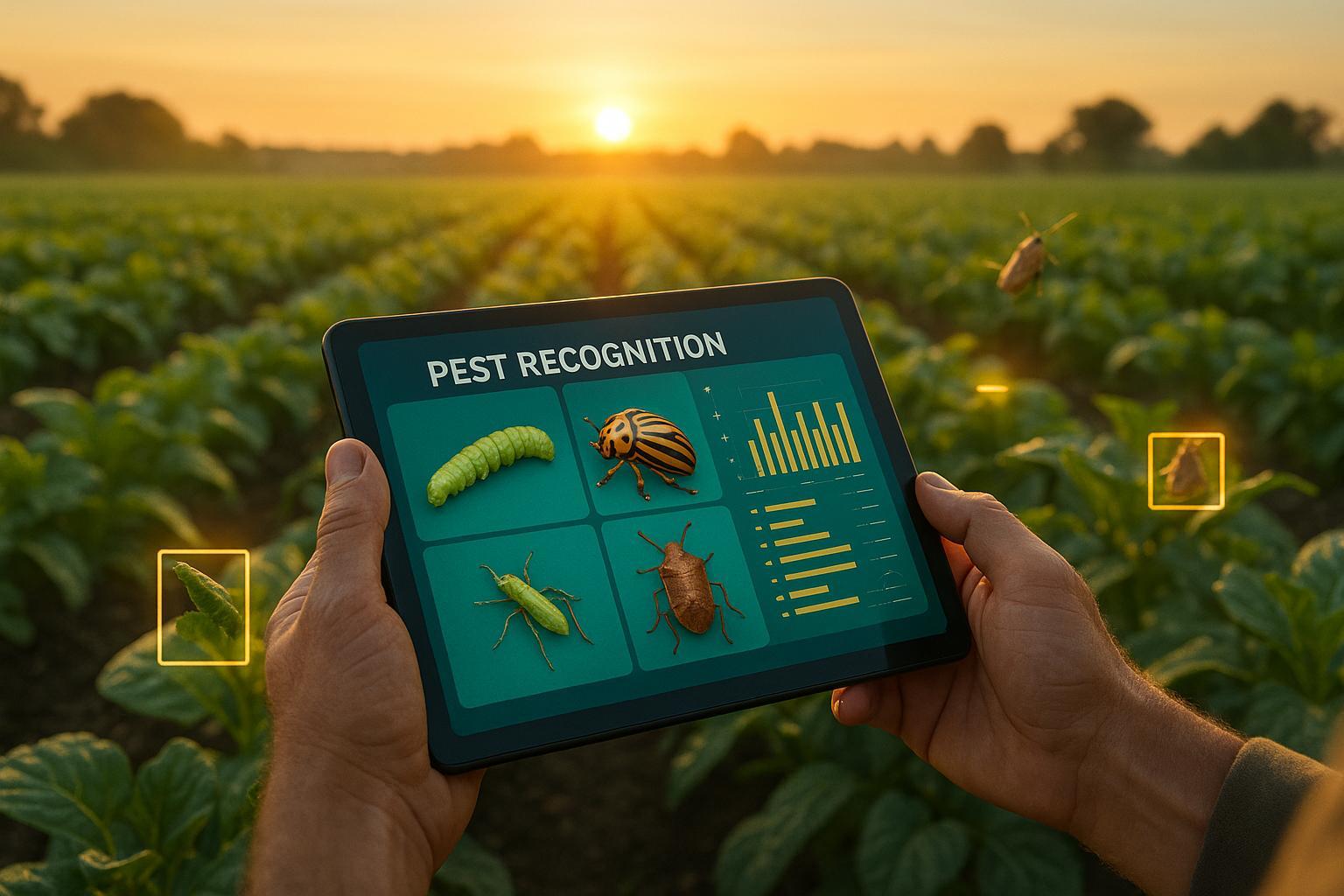
AI Datasets for Pest Recognition: Explained
Explore how AI datasets enhance pest recognition in agriculture, tackling challenges and leveraging synthetic data for improved crop management.
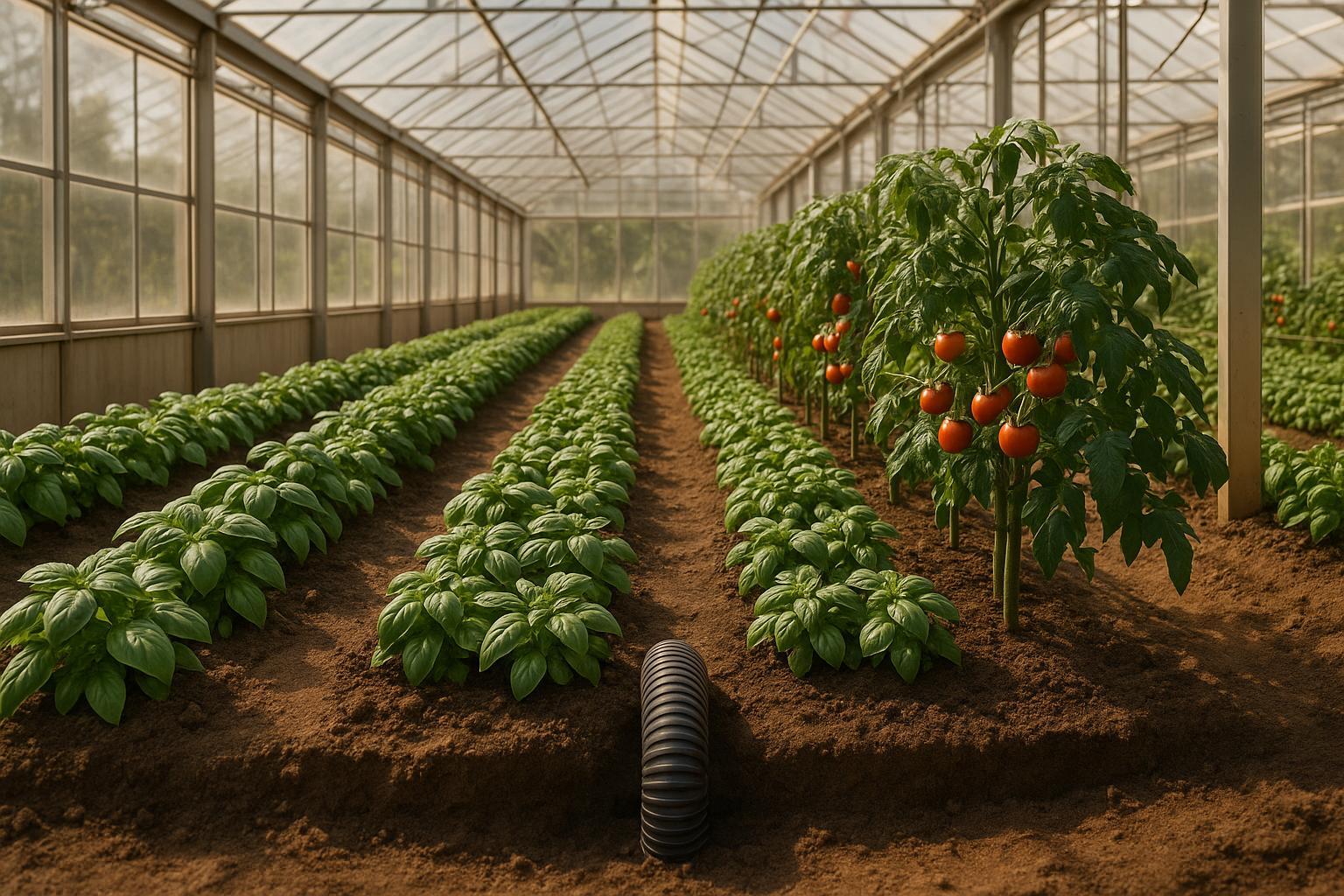
Companion Planting with Geothermal Climate Control
Explore how geothermal climate control enhances companion planting by creating optimal growing conditions, boosting yields, and reducing energy costs.
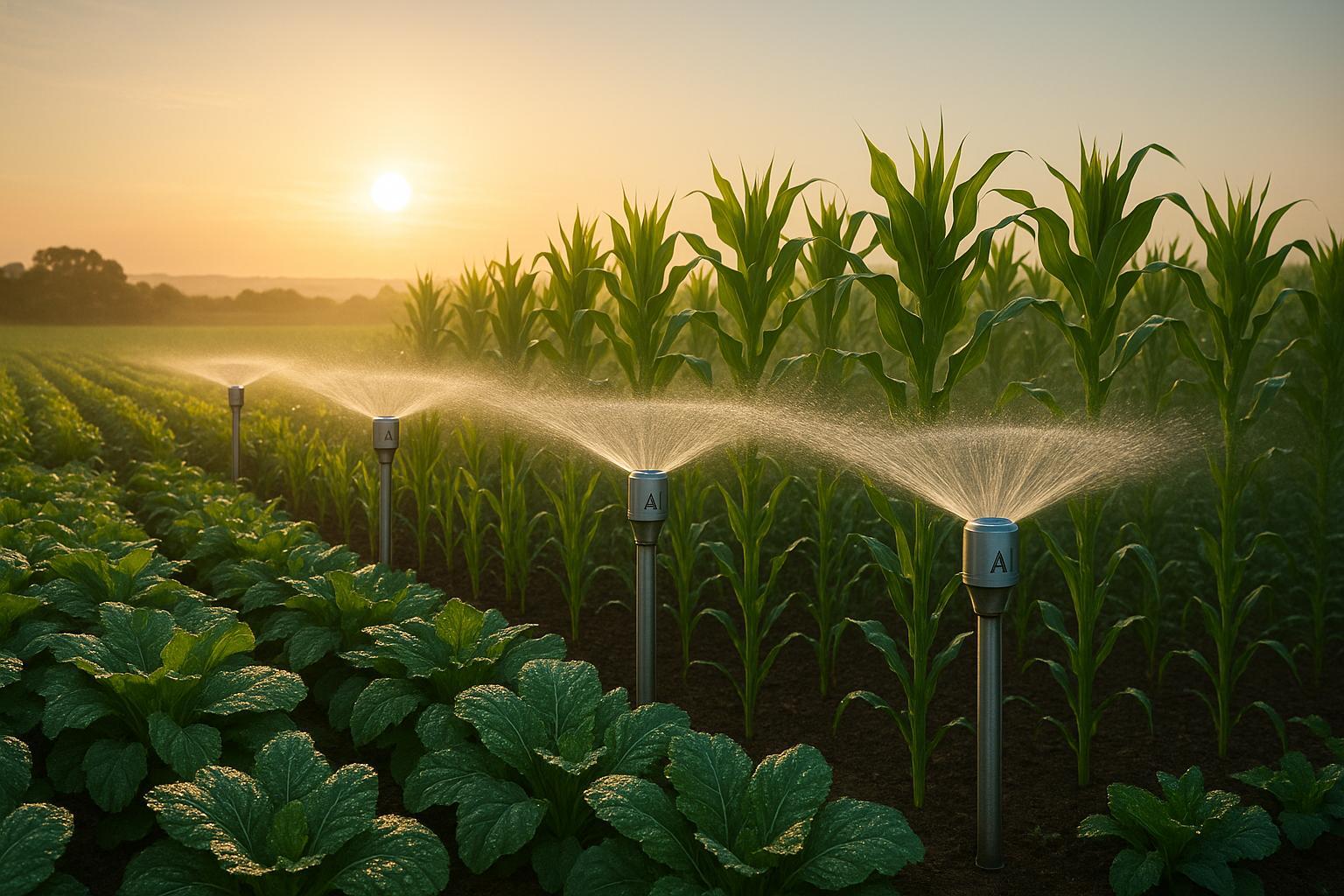
Checklist for AI-Optimized Irrigation
Explore how AI irrigation systems enhance water efficiency, boost crop yields, and simplify garden management through smart technology.
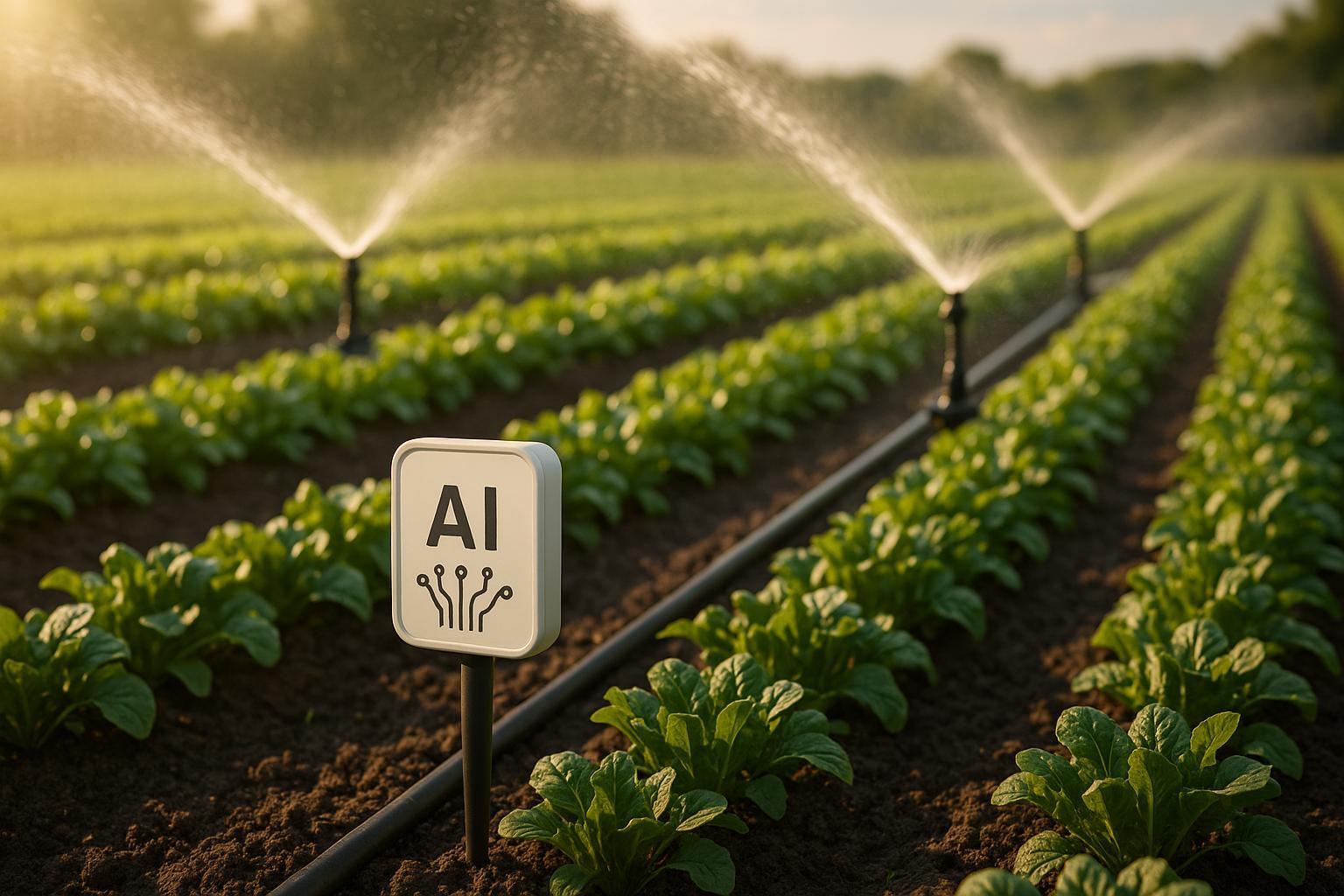
Top 7 AI Features for Smart Irrigation Systems
Explore how AI features in smart irrigation systems optimize water usage, enhance plant health, and boost crop yields effectively.

The Ultimate Guide to Tower Garden Costs: Factors, Breakdown, and Savings
Discover the key factors influencing tower garden costs, breakdown of expenses, and ways to save money on owning a tower garden. Learn how to budget for a tower garden.
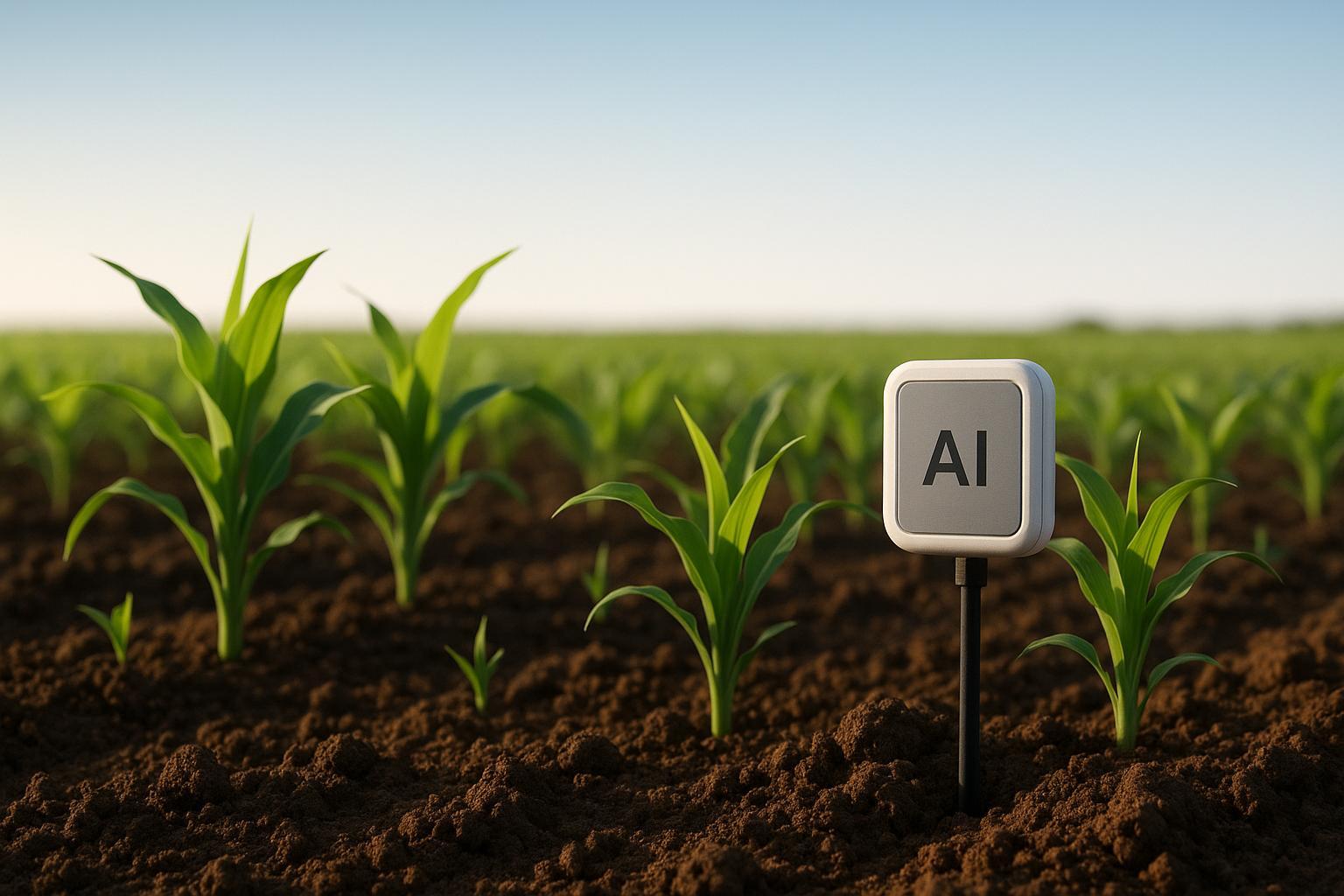
AI for Soil Water Retention Analysis
Explore how AI is revolutionizing soil water retention analysis, optimizing irrigation, and aiding in drought-resistant plant selection for sustainable gardening.